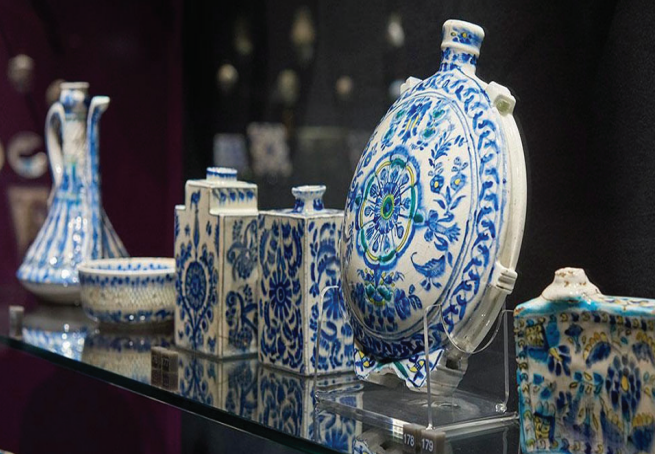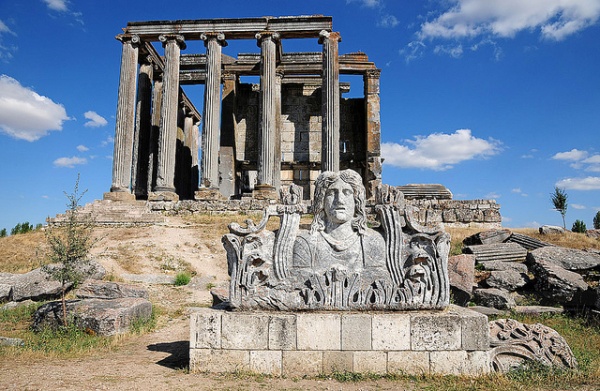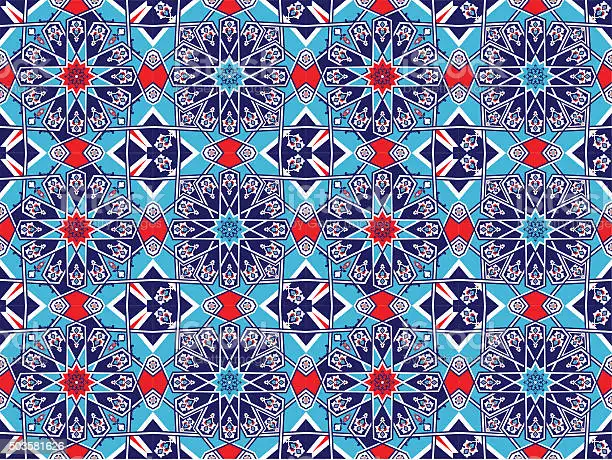5 Days Tour
Kütahya is a small province in the midst Türkiye. It is the hometown of the world famous Kütahya Tiles. Kütahya is also a thermal springs center with hot springs in the midst of a delightful scenery. In the ancient times the city was known as Kotiaeion. The history of the city can be traced back to the Hittite period around 13th century BC., as the city of the Goddess Kotys. In 1071 AD. the Seldjouks conquered the city only to loose and reconquer it from the European Crusaders. As a medieval Byzantine town, it was taken by the Seldjouk Turks toward the end of the 11th century. Kütahya emerged as a centre of the Ottoman ceramic industry, supplying tiles and faience for mosques, churches and other buildings in Türkiye and parts of the Middle East. The ancient city of Aizanoi is located 48 km southwest of Kütahya, at Çavdarhisar.
Aizanoi, the capital of Aizanitis, belonged to Phrigia. It is said that the early settlement dates back to the second millennium BC. Excavations carried out around settlement layers dated to the third millennium were unearthed.
Day 1
Departure from İstanbul after early breakfast for Kütahya. Lunch and visit the Tile Museum displaying the world famed tiles since 14th century porcelain inscriptions, dishes, panel boards. Ulu Mosque, in the name of Sultan Yıldırım Beyazıt, built in 1401 with columns brought from the antique city of Aizanoi. Dinner at hotel and overnight.
Day 2
Visit to the Archaeological Museum with very rich display from Hittites, Frigs, Hellenistic, Roman, Byzantine, Seldjouks and Ottoman times. Most important is the Amazon Sarcophagus found in Aizanoi, Çavdarhisar.
Historical Kütahya Houses are typical 19th century Anatolian residences. Mevlevihane (Dönenler Mosque) built for “whirling derwishes.” 100 Years Old Chestnut Tree with a diameter of 8 m. and 25 m. height which witnessed many civilizations through the history, registered as “Monument Tree” by law. Dinner at hotel and overnight.
Day 3
Departure after breakfast to Afyonkarahisar. Frig Kings Road which has been eroded by the horse or ox-drawn carriages using this road since 1000.
Göynüş Valley and Sacred Grave Rooms of Yılantaş and Aslantaş. Maltaş, Kybele Open-Air Temple & many other Frigian Rock Tombs carved in the rocks.
Aslankaya Monument, impressive open-air temple with a huge lion's figure and reliefs describing Kybele on the triangular pediment.
Emre Lake at Epiktetos, city of philosophers, in the Frig Valley.
Gazlıgöl, known with the story of King Midas's daughter, about it's curing thermal waters of this lake.
Dumlupınar Martyrs Cemetery from the Chief Commanders Battle in 1922 during Independence War. Arrival at Uşak. Dinner at hotel and overnight.
Day 4
Drive to Ulubey Canyon, the biggest in the world after the Grand Canyon. The Glass Terrace, bird-eye viewing canyon is an exciting experience. Return back to Uşak. Visit Archaeological Museum displaying the Treasures of Lydian King Kroisos. The stolen treasures were bought by NY Metropolitan Museum and displayed until 1993, than returned home to Türkiye. Most important piece is the Winged Seahorse. Drive to Çavdarhisar-Aizanoi Antique City that has significant remains such as the Zeus Temple which is one of the best preserved when compared to other Zeus Temples in the world. The temple is among the rarest religious ancient buildings in Anatolia which have survived till today with the original form. The Complex of Stadium with a capacity of 15000, and the Theatre with a capacity of 20000 people is unique in the ancient world. Macellum (round building serving as a foodmarket) is one of the first exchange stock market in the world. Inscriptions on the walls of this building show the prices of all goods sold in the markets. Drive to Kütahya. Dinner at hotel and overnight,
Day 5
Departure for İstanbul after breakfast.




